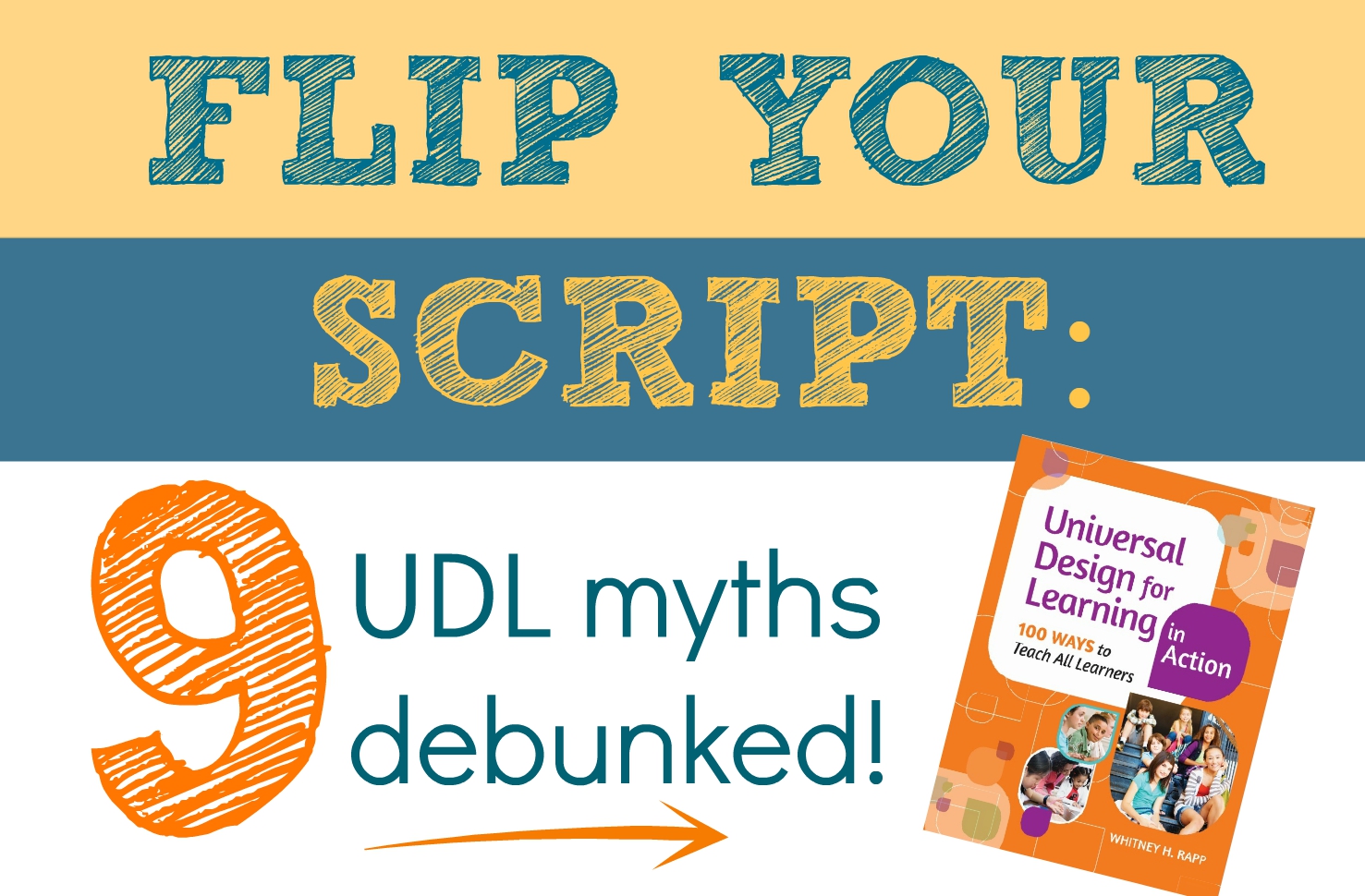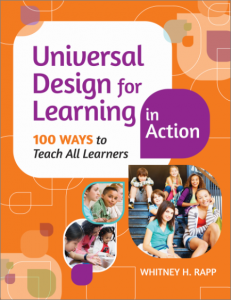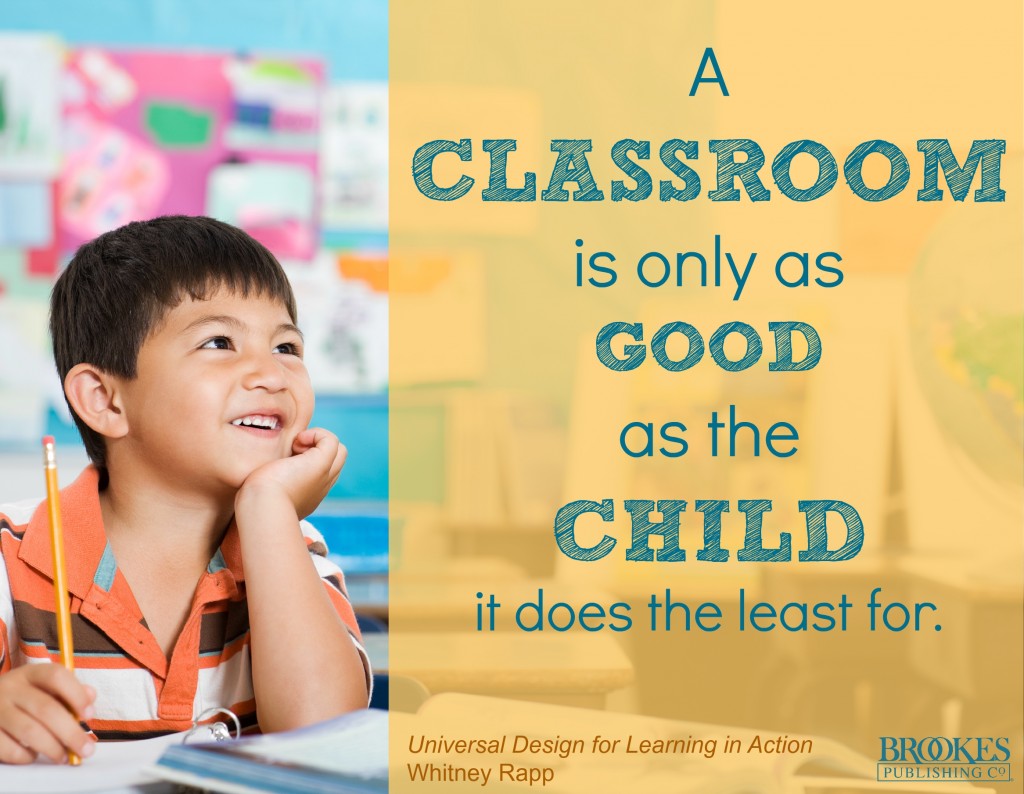Flip Your Script: 9 Ways to Bust Mental Barriers to UDL
January 7, 2016
This post is part of our Fair Is Not Always Equal…Now What? blog series. Stay tuned for many more posts!
Embracing universal design for learning (UDL) takes a lot of careful planning and coordinated effort. But the first–and maybe trickiest–hurdle you might encounter is convincing the UDL skeptics. The people who love the idea in theory, but think it’ll eat up too much time and too many resources. The ones who worry about the ramifications for student behavior and performance. And the ones who think UDL is just a fancy term for differentiation–something they’re already doing for the students who need it.
 In Universal Design for Learning in Action, Whitney Rapp shares and responds to the anti-UDL arguments she’s heard while working with teachers in various settings. Here are nine of them, with scripts and corresponding “flips” adapted from her book. If you’re trying to win over a UDL skeptic, keep these helpful responses handy (and see Whitney’s book for more in-depth answers and strategies).
In Universal Design for Learning in Action, Whitney Rapp shares and responds to the anti-UDL arguments she’s heard while working with teachers in various settings. Here are nine of them, with scripts and corresponding “flips” adapted from her book. If you’re trying to win over a UDL skeptic, keep these helpful responses handy (and see Whitney’s book for more in-depth answers and strategies).
THE SCRIPT: “This will take way too much time.”
THE FLIP: “At first, it might take more time to set up and plan a universally designed classroom and curriculum. But isn’t it worth it? How much time is “˜too much,’ when we’re talking about engaging and reaching all kids and improving outcomes for everyone?”
THE SCRIPT: “It’s just too much to ask teachers to do.”
THE FLIP: “It’s a lot of work, yeah. But if teachers invest the time to meet all students’ needs now, they’ll actually save time in the future. And besides, doing the most for every single student is our goal as educators.”
THE SCRIPT: “We don’t have the money to hire a UDL specialist.”
THE FLIP: “We don’t need an outside specialist or intensive teacher training for UDL. All we need is to follow the UDL principles and mindsets as we plan teaching practices and curricula.”
(Sometimes teachers do need extra materials or resources to teach and engage all students, but they don’t have to break the bank. For example, many of the strategies in Universal Design for Learning in Action are free or inexpensive.)
THE SCRIPT: “This isn’t the way we’ve always done it.”
THE FLIP: “Look at the statistics. The old way wasn’t working. So it’s time to try something new to teach and reach diverse learners.”
THE SCRIPT: “UDL just means “˜anything goes’ in the classroom.”
THE FLIP: “UDL doesn’t mean that any performance level is acceptable, any behavior is okay, or little to no progress is just fine. What it does mean is that teachers are eager to think outside of the box and try new things to engage all students and help them learn. It means setting high expectations and giving kids multiple ways to reach them and show what they know.”
THE SCRIPT: “I already differentiate for the few kids who need it; what’s the difference?”
THE FLIP: “There aren’t just a few students who need it–every single student will need some kind of differentiation at some point. And universally designing learning goes far beyond just “˜differentiating.’ A differentiated strategy that’s only available to a few students will help only those students; if it’s made accessible to all children, many more can and will benefit.”
THE SCRIPT: “That’s a lot to do for just one student.”
THE FLIP: “Maybe that one student introduced the need for a certain strategy, but if it’s put in place, odds are many other kids will benefit. And if it is just for one student, do it anyway! That student is worth it.”
THE SCRIPT: “We can’t do UDL because our district uses a curriculum with scripted lessons.”
THE FLIP: “Yes, we can! Even within highly structured routines and lessons, we can still use multiple ways of engaging the students, presenting the information, and allowing students to show what they know. For example, a lesson might list specific questions we need to ask, but we can let students choose to sign, draw a picture, speak the answer, or write a sentence while sitting in the seat of their choice.”
THE SCRIPT: “Doesn’t this mean that some students will have an unfair advantage?”
THE FLIP: “What it really means is that we’re leveling the playing field so all students will have a fair advantage. Imagine a long hike in which some students carry pebbles in their backpacks and others have to carry rocks. UDL strategies are like trading those students’ rocks for pebbles. They aren’t there to excuse students from the “˜hike’ or make it shorter–they’re there to make things fair.”
Design and Deliver author Loui Lord Nelson debunks more stubborn UDL myths in this popular blog post.
Guest poster Deborah Taub helps you take the first step toward UDL.
What do you think? Are there any other UDL preconceptions that should be debunked? How would you convince a UDL skeptic? Share your thoughts in the comments below!









Write a Comment
Your email address will not be published. Required fields are marked *
comments
Kelli Tharrington says
A lot of implementing UDL is the attitude of the teacher. Yes, time will need to be spent planning and yes, it will be different that what you may be used to. But the magic happens when you step out of your comfort zone, but more importantly when you change your attitude. All students will benefit from lessons that are planned using UDL.
Post a Comment